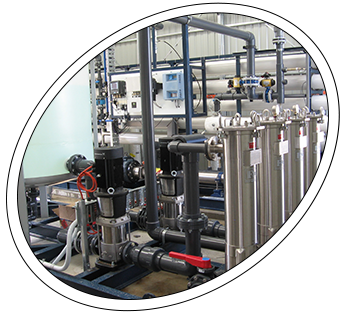 |
FAQs
Q: Does it make sense to use a tighter cartridge filter upstream of an RO system to reduce the membrane fouling rate?
A: The tighter the filter porosity, the more the filter will cost and the more quickly it will need to be replaced. Because cartridge filters have a relatively low dirt-holding capacity compared to RO membrane elements, a significant number of filters would need to be replaced before they would have a significant impact on the RO fouling rate. But if it is simply not feasible to effectively clean an RO onsite due to water demand, system design, or because of the nature of the fouling particles (such as heavy clay), then it may be cost effective to invest in cartridge filters or in improved upstream filtration.
|
Q: Should I clean my RO first with an acidic solution or an alkaline solution?
A: Cleaning first with an acidic solution will remove metals that tend to act as coagulants in binding together clays and biological materials. But it is critical that only a moderately low pH be used, such as 3.5 to 4.0, to prevent stabilization of any biological materials. Cleaning first with an alkaline solution is a good approach when biological materials might prevent good chemical contact with sulfate scale, which then enables the use of a second step with an aggressively low pH. An advantage of finishing with a low pH solution is a temporarily tightened membrane that provides better salt rejection at the expense of some of its normalized permeate flow rate.
Q: What is fouling my RO system if I have high SDI values but the spent SDI filter looks clean and my cartridge filters last more than a month?
A: These are common symptoms of the presence of fine biological polysaccharide particles. They might be generated in an upstream storage tank if not sufficiently chlorinated, or they might originate in a surface water source. If the natural water is chlorinated prior to filtration, it can break up the polysaccharides into small particles that are even more difficult to filter. These materials are difficult to clean if allowed to accumulate on an RO membrane.
Q: My RO membrane elements are about three years old. Should I replace them?
A: Age is not a good basis for replacing RO membrane because they may last ten years or more if well maintained. But if the salt rejection or the permeate flow rate has declined so that the purified water no longer meets process quality or flow demands, then they should be replaced. If downstream ion exchange is depleting more frequently, then the question is best answered by the return on investment (ROI). If permanent fouling results in the need for more frequent cleaning, then the increased cost of the cleaning should be included in the ROI calculation.